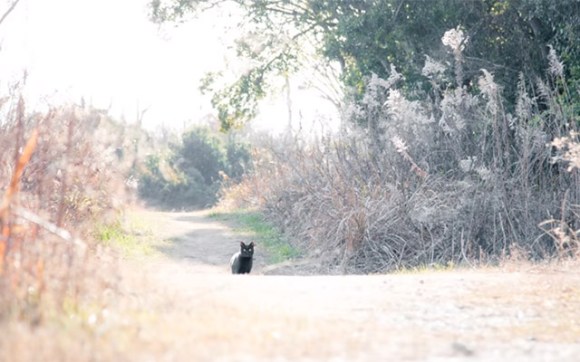
Prepare some tissues, then prepare for change.
Back in 2012, when 12-year-old Chika Taniyama wrote her heartfelt essay titled 78 En no Inochi (78 Yen per Life), she probably had no idea of the impact it would still be having four years later.
In her writing, Chika recounts the story of a neighborhood cat she calls Kiki, after the character from Studio Ghibli’s Kiki’s Delivery Service. Kiki first appeared in Chika’s neighborhood as a little black kitten, her friendly nature quickly causing all of those living in the area to fall quite in love with her.
After a couple of years, Kiki gave birth to her own litter of kittens. Because Kiki was a stray, and she and her kittens had nowhere to go, Chika’s neighbor Ms. Suzuki took them in. Chika would go to visit the kittens nearly every day, growing to love them as if they were her own.
Until one day, when she went to visit them and found they were no longer there. Her head hung, Ms. Suzuki explained that she had taken the kittens to the animal shelter.
Not really understanding what that entailed, Chika assumed the kittens had been taken to a place where they could find new families and live happily with them. But the next day at school, when she relayed the story to her friend, that friend replied: “To the shelter? They’ll be killed there.”
Chika didn’t want to believe it, but as soon as she got home after school, she rushed to the computer to look up information about animal shelters, and was shocked by the horrors of reality. Dogs and cats, either lost or abandoned by their owners, would be held for a mere three days. If no one came to claim or adopt them, it meant their death. Ten animals at a time would be stuffed into a gas chamber, which would then fill with carbon monoxide. For minutes the animals would squirm and suffer before finally dying, and their bodies, like trash, would then be thrown into an incinerator and burned.
The cost to do away with each of those lives? 78 yen, or about 70 cents.
Sadly, Chika’s friend had been right, and it shocked Chika even more to find out that each year approximately 200,000 animals met this fate.
“They may be animals, but is it right for humans to so easily take away their lives?” she wondered.
The sound of Kiki’s meowing each day as she called out for her kittens brought back the images of what Chika had seen on the internet. Those thoughts kept her up at night for days on end.
One day, Kiki went missing too, and Chika imagined the worst until she reappeared, her stomach wrapped in bandages. Ms. Suzuki had taken Kiki in to be spayed so she would have no more kittens, and had decided to keep her as her own.
Chika felt relieved, yet jealous at the same time. She loved animals, yet didn’t feel confident she could take on that sort of accountability.
“Raising an animal is taking absolute responsibility for another life,” she wrote in her essay. “You can’t throw it away like a toy. What I learned is that if you don’t have the confidence to care for them until the very end, you shouldn’t have one.”
Chika’s heart-rending story went on to touch a number of people, including the judges at a competition Toyohashi City in Aichi Prefecture, where it was chosen as best written work. Even today it is being read by children in Toyohashi’s public schools as part of their Ethics curriculum. It has also inspired a group dedicated to eliminating the culling of shelter animals in Japan, who is making the essay into an easy-to-read picture book for children, as well as posters and pamphlets.
The group’s crowdfunding project has already reached 152 percent of its goal, with 1,530,900 yen (over $13,600) raised by 232 people, but with the fundraising continuing until 23:59 on March 31 there’s still time to donate here (sorry, site in Japanese only).
Anyone who’s lived in Japan for any amount of time can attest to the problem many areas have with strays — cats in particular. There are a number of groups and individuals working to ease the dilemma, but without a massive change in the way the population as a whole thinks, there likely won’t be an end in sight. With works like Chika’s essay being taught in elementary schools, and picture books for children being made available, there is hope that the change can begin with Japan’s younger generations.
Sources: YouTube/ プロジェクト 78円の命, grape, GREEN FUNDING
Images: YouTube/ プロジェクト 78円の命 via grape
You may also enjoy:
Neco Republic: A cat cafe for rescue cats and the people who love them 【Pics & Video】

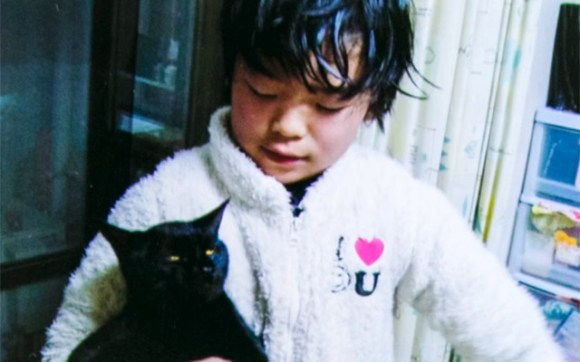
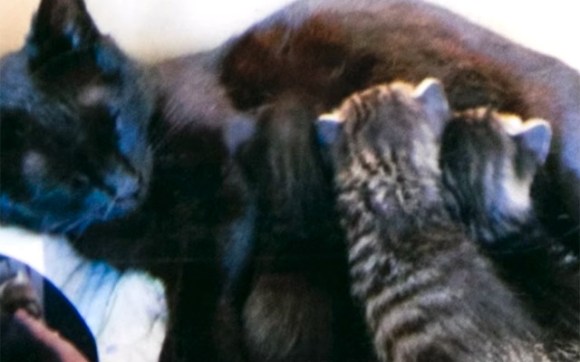
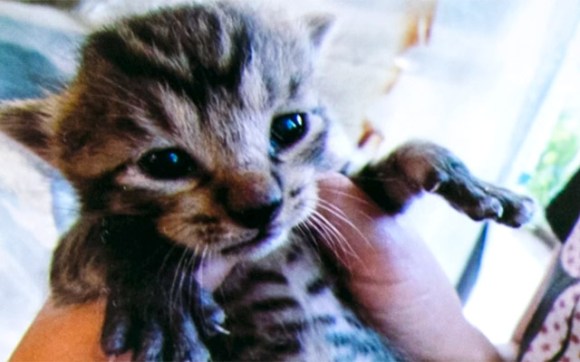
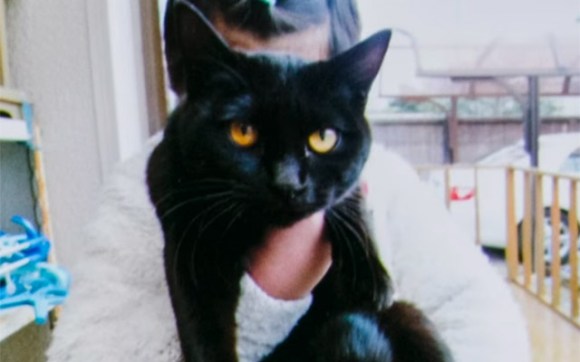

 Will Smith makes sushi with Japanese YouTuber Bilingirl Chika
Will Smith makes sushi with Japanese YouTuber Bilingirl Chika Love Live! character with controversial skirt to continue as orange spokesperson, petitioner says
Love Live! character with controversial skirt to continue as orange spokesperson, petitioner says Parents of bullied teenage girl who committed suicide commission portrait to “attend” Seijinshiki
Parents of bullied teenage girl who committed suicide commission portrait to “attend” Seijinshiki Video of late kitten playing with dog will brighten your day and then leave you crying
Video of late kitten playing with dog will brighten your day and then leave you crying McDonald’s new Happy Meals offer up cute and practical Sanrio lifestyle goods
McDonald’s new Happy Meals offer up cute and practical Sanrio lifestyle goods More foreign tourists than ever before in history visited Japan last month
More foreign tourists than ever before in history visited Japan last month The oldest tunnel in Japan is believed to be haunted, and strange things happen when we go there
The oldest tunnel in Japan is believed to be haunted, and strange things happen when we go there Starbucks reopens at Shibuya Scramble Crossing with new look and design concept
Starbucks reopens at Shibuya Scramble Crossing with new look and design concept Is the new Shinkansen Train Desk ticket worth it?
Is the new Shinkansen Train Desk ticket worth it? Randomly running into a great sushi lunch like this is one of the best things about eating in Tokyo
Randomly running into a great sushi lunch like this is one of the best things about eating in Tokyo Arrest proves a common Japanese saying about apologies and police
Arrest proves a common Japanese saying about apologies and police Japan’s cooling body wipe sheets want to help you beat the heat, but which work and which don’t?
Japan’s cooling body wipe sheets want to help you beat the heat, but which work and which don’t?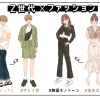 Survey reveals Japan’s Generation Z dresses for social media, not for self-expression
Survey reveals Japan’s Generation Z dresses for social media, not for self-expression Tokyo ramen restaurant’s made-to-order noodles are only the beginning of its awesomeness
Tokyo ramen restaurant’s made-to-order noodles are only the beginning of its awesomeness Disney princesses get official manga makeovers for Manga Princess Cafe opening in Tokyo
Disney princesses get official manga makeovers for Manga Princess Cafe opening in Tokyo We try out “Chan Ramen”, an underground type of ramen popular in the ramen community
We try out “Chan Ramen”, an underground type of ramen popular in the ramen community Beautiful new Final Fantasy T-shirt collection on the way from Uniqlo【Photos】
Beautiful new Final Fantasy T-shirt collection on the way from Uniqlo【Photos】 Foreign English teachers in Japan pick their favorite Japanese-language phrases【Survey】
Foreign English teachers in Japan pick their favorite Japanese-language phrases【Survey】 There’s a park inside Japan where you can also see Japan inside the park
There’s a park inside Japan where you can also see Japan inside the park Japanese convenience store packs a whole bento into an onigiri rice ball
Japanese convenience store packs a whole bento into an onigiri rice ball Studio Ghibli releases Kiki’s Delivery Service chocolate cake pouches in Japan
Studio Ghibli releases Kiki’s Delivery Service chocolate cake pouches in Japan Japan’s bone-breaking and record-breaking roller coaster is permanently shutting down
Japan’s bone-breaking and record-breaking roller coaster is permanently shutting down New definition of “Japanese whiskey” goes into effect to prevent fakes from fooling overseas buyers
New definition of “Japanese whiskey” goes into effect to prevent fakes from fooling overseas buyers Foreign passenger shoves conductor on one of the last full runs for Japan’s Thunderbird train
Foreign passenger shoves conductor on one of the last full runs for Japan’s Thunderbird train Our Japanese reporter visits Costco in the U.S., finds super American and very Japanese things
Our Japanese reporter visits Costco in the U.S., finds super American and very Japanese things Kyoto bans tourists from geisha alleys in Gion, with fines for those who don’t follow rules
Kyoto bans tourists from geisha alleys in Gion, with fines for those who don’t follow rules Studio Ghibli unveils Mother’s Day gift set that captures the love in My Neighbour Totoro
Studio Ghibli unveils Mother’s Day gift set that captures the love in My Neighbour Totoro Domino’s Japan now sells…pizza ears?
Domino’s Japan now sells…pizza ears? New Japanese KitKat flavour stars Sanrio characters, including Hello Kitty
New Japanese KitKat flavour stars Sanrio characters, including Hello Kitty Sales of Japan’s most convenient train ticket/shopping payment cards suspended indefinitely
Sales of Japan’s most convenient train ticket/shopping payment cards suspended indefinitely Sold-out Studio Ghibli desktop humidifiers are back so Totoro can help you through the dry season
Sold-out Studio Ghibli desktop humidifiers are back so Totoro can help you through the dry season Japanese government to make first change to romanization spelling rules since the 1950s
Japanese government to make first change to romanization spelling rules since the 1950s Ghibli founders Toshio Suzuki and Hayao Miyazaki contribute to Japanese whisky Totoro label design
Ghibli founders Toshio Suzuki and Hayao Miyazaki contribute to Japanese whisky Totoro label design Doraemon found buried at sea as scene from 1993 anime becomes real life【Photos】
Doraemon found buried at sea as scene from 1993 anime becomes real life【Photos】 Tokyo’s most famous Starbucks is closed
Tokyo’s most famous Starbucks is closed One Piece characters’ nationalities revealed, but fans have mixed opinions
One Piece characters’ nationalities revealed, but fans have mixed opinions We asked a Uniqlo employee what four things we should buy and their suggestions didn’t disappoint
We asked a Uniqlo employee what four things we should buy and their suggestions didn’t disappoint Princesses, fruits, and blacksmiths: Study reveals the 30 most unusual family names in Japan
Princesses, fruits, and blacksmiths: Study reveals the 30 most unusual family names in Japan Studio Ghibli’s new desktop Howl’s Moving Castle will take your stationery on an adventure
Studio Ghibli’s new desktop Howl’s Moving Castle will take your stationery on an adventure Elementary school student’s “wish to become a smartphone” breaks Japanese internet’s heart
Elementary school student’s “wish to become a smartphone” breaks Japanese internet’s heart Japanese farmer discovers his chickens are helping raise a kindle of kittens
Japanese farmer discovers his chickens are helping raise a kindle of kittens Stray kitten finds loving home, shortly thereafter takes over and becomes immersed in anime
Stray kitten finds loving home, shortly thereafter takes over and becomes immersed in anime Tough-as-nails bullied Japanese schoolgirl stays home from school, but not because she was sad
Tough-as-nails bullied Japanese schoolgirl stays home from school, but not because she was sad Cute black cat waiting at register in Japanese convenience store makes us wonder where Kiki is
Cute black cat waiting at register in Japanese convenience store makes us wonder where Kiki is “Peaceful life with many dogs” is unacceptable dream, Japanese high school teacher tells student
“Peaceful life with many dogs” is unacceptable dream, Japanese high school teacher tells student Cute cat discovers bathtub for first time, eventually learns how to jump out after falling in
Cute cat discovers bathtub for first time, eventually learns how to jump out after falling in First look at Studio Ghibli’s new Spirited Away live-action stage play
First look at Studio Ghibli’s new Spirited Away live-action stage play Beckoning cat fortunes lure a kitten into their box at cat temple in Japan
Beckoning cat fortunes lure a kitten into their box at cat temple in Japan Taiwan’s host of mascot characters invade Japan, bring own brand of cuteness to the country
Taiwan’s host of mascot characters invade Japan, bring own brand of cuteness to the country Ghibli cosplay: Official dresses bring anime heroine vibes to your wardrobe
Ghibli cosplay: Official dresses bring anime heroine vibes to your wardrobe Tokyo Prince Hotel delivers a hint of magic with Kiki’s Delivery Service suite and bakery
Tokyo Prince Hotel delivers a hint of magic with Kiki’s Delivery Service suite and bakery Japanese girl can’t think of anything to write about for in-class essay, writes awesome one anyway
Japanese girl can’t think of anything to write about for in-class essay, writes awesome one anyway We joined the 10,000 otaku who recently congregated in Madrid for Japan Weekend
We joined the 10,000 otaku who recently congregated in Madrid for Japan Weekend Studio Ghibli’s new Kiki’s Delivery Service Tomica makes us rethink toy cars
Studio Ghibli’s new Kiki’s Delivery Service Tomica makes us rethink toy cars
Leave a Reply